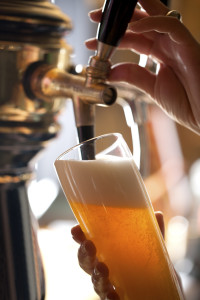If you’ve ever been to a good party, you know that all you needed is a chilled keg, a beer tap and a red solo cup, and you’ll be sure to have a good time. However, at your local classy bar, the system is actually a bit more complicated than that. The keg-tap-solo cup system works well for a frat boy looking for his third buzz of the weekend, but a good beer system will include a high powered and reliable beer pump. In the first installment we talked about the basics of how a beer pump works and beer pump best practices. In this blog, we will cover the top seven beer pump tips to help quality establishments provide the best possible service.

Draft Beer
Top Seven Beer Pump Tips
Here are our top seven beer pump tips for draught beer dispensing systems:
Refer to the Manufacturer: Manufacturers usually provide detailed cleaning procedures for each specific pump, refer to these guides as often as needed. Each pump requires unique procedures and the manufacturers are the experts.
Proper CO2 Pressure: Ultimately, to have a successful draft beer system, you have to get this right. CO2 pressure should be applied to the keg or tank to maintain the beer’s carbonation level while pumping the beer through the system. However, it cannot be applied too strongly, or else the beer will absorb the carbonation, affecting the quality of the beer.
Understand FOBs: Most draught beer systems with beer pumps also use FOBs placed immediately after the beer pump. This keeps the pump from running dry when the beer supply to the pump runs out, a primary cause of pump failure.
Check Valves: Make good use of these handy check gadgets usually supplied by the manufacturer. Check valves ensure there is no backflow when the beer is not being pumped.
Faucets per Pumps: Limit the amount of faucets you run to two per beer pump. Exceeding this can lead to problems like reduce flow or carbonation. Additionally, don’t run any more than two beer pumps per secondary regulator.
System Design and Installation
The last two tips concern system design and installation.
System Resistance: When using additive pressure type pumps, set pump pressure so that the sum total of the keg pressure plus pump pressure together equal system resistance pressure.
Installation: Be sure to install beer pumps less than 5 feet above cooler floor height. Beer pumps should be installed below the level of the faucet at the bar. For a comprehensive plan, you need to contact a beer lines expert who will make sure the distance and pressure ratio is right for what you plan on serving.
If you need more help understanding beer pumps, system resistance, or other components of the draft beer line system, please contact us at Clean Beer, in Milford, MA. We can meet all your beer line needs, from installation to cleaning and maintenance. In addition to our services, we sell new and used beer line equipment, for your home or bar. Clean Beer is the home of the clean beer line experts, contact us about your home or commercial tap needs
